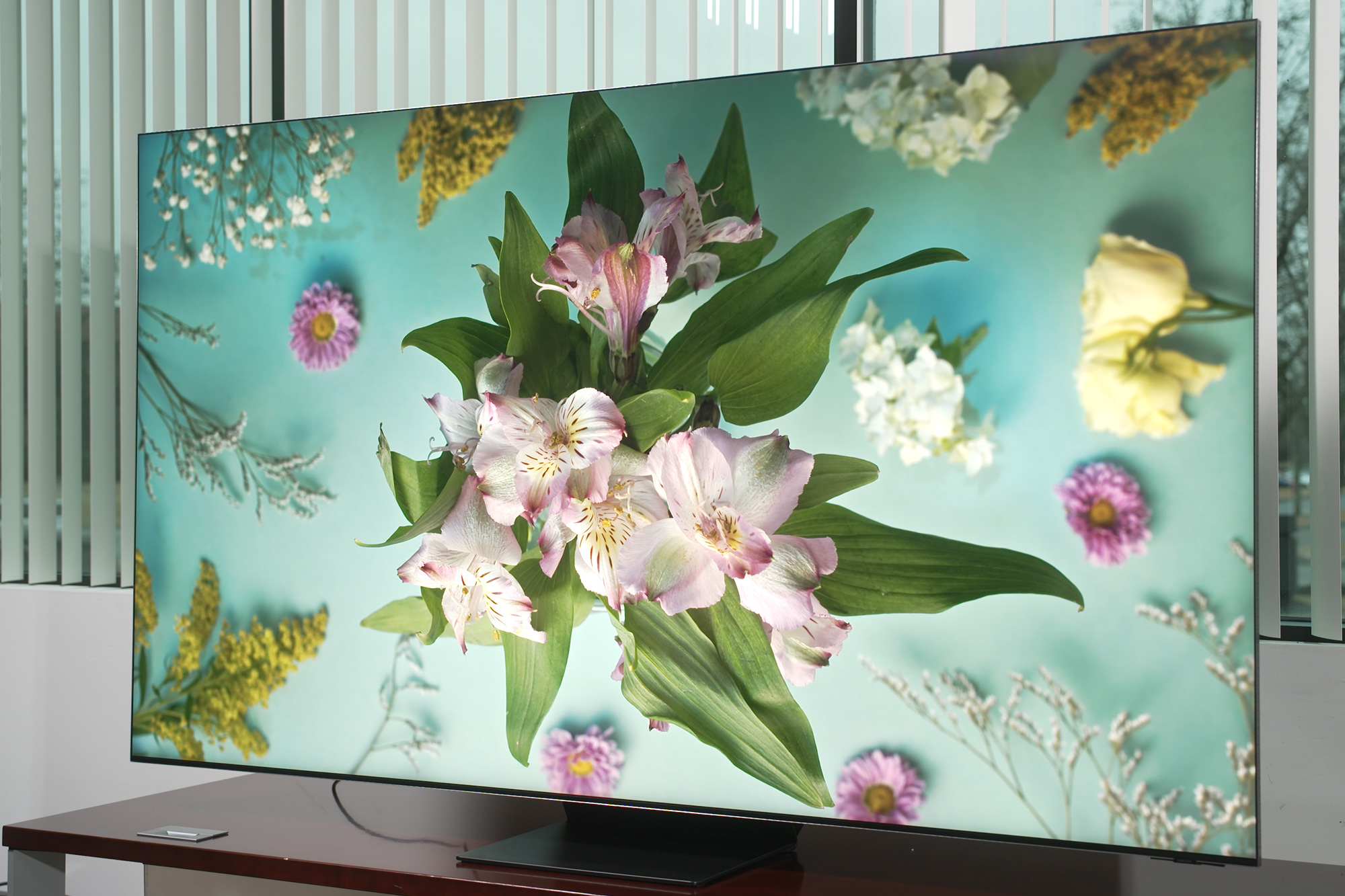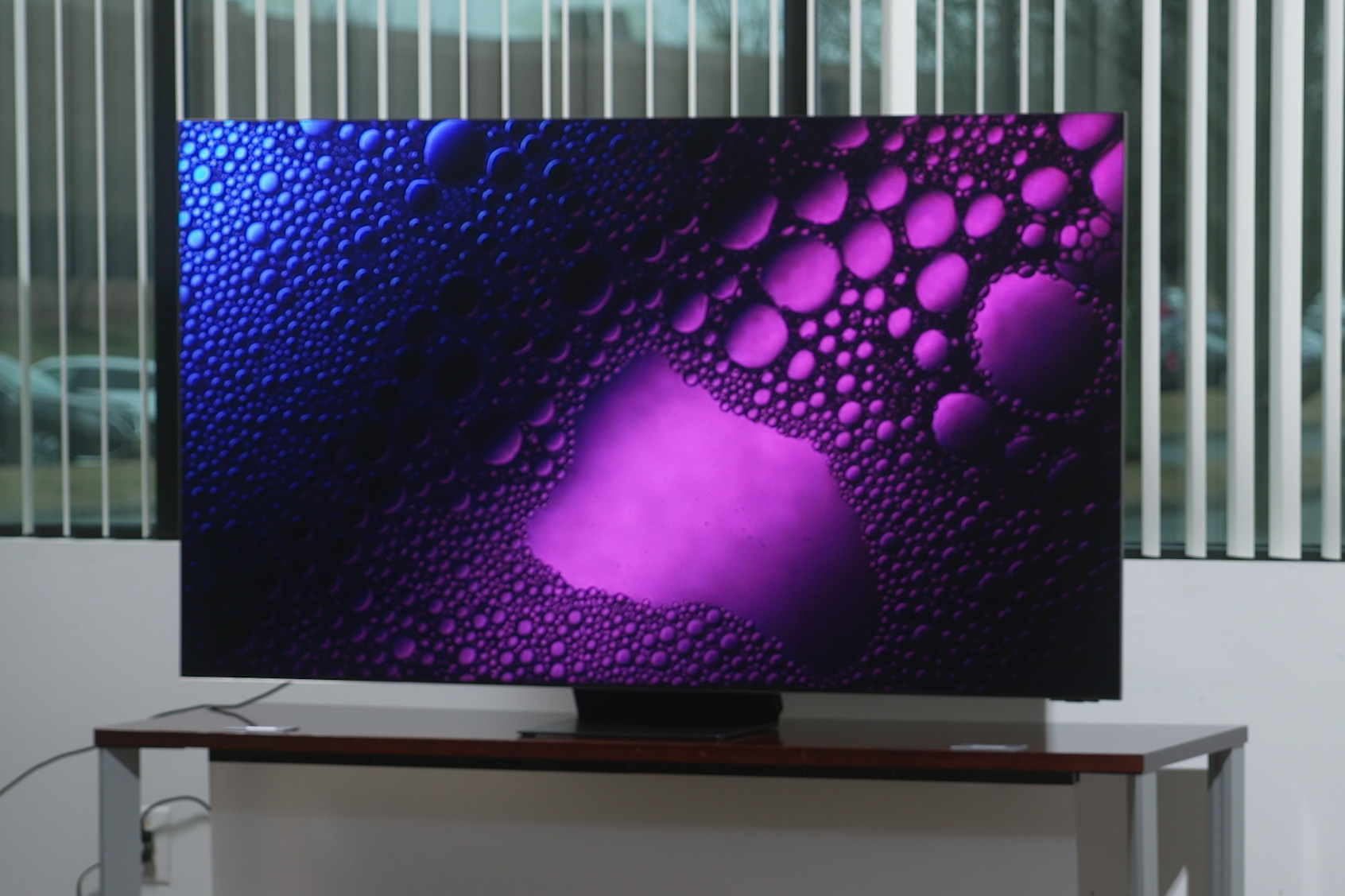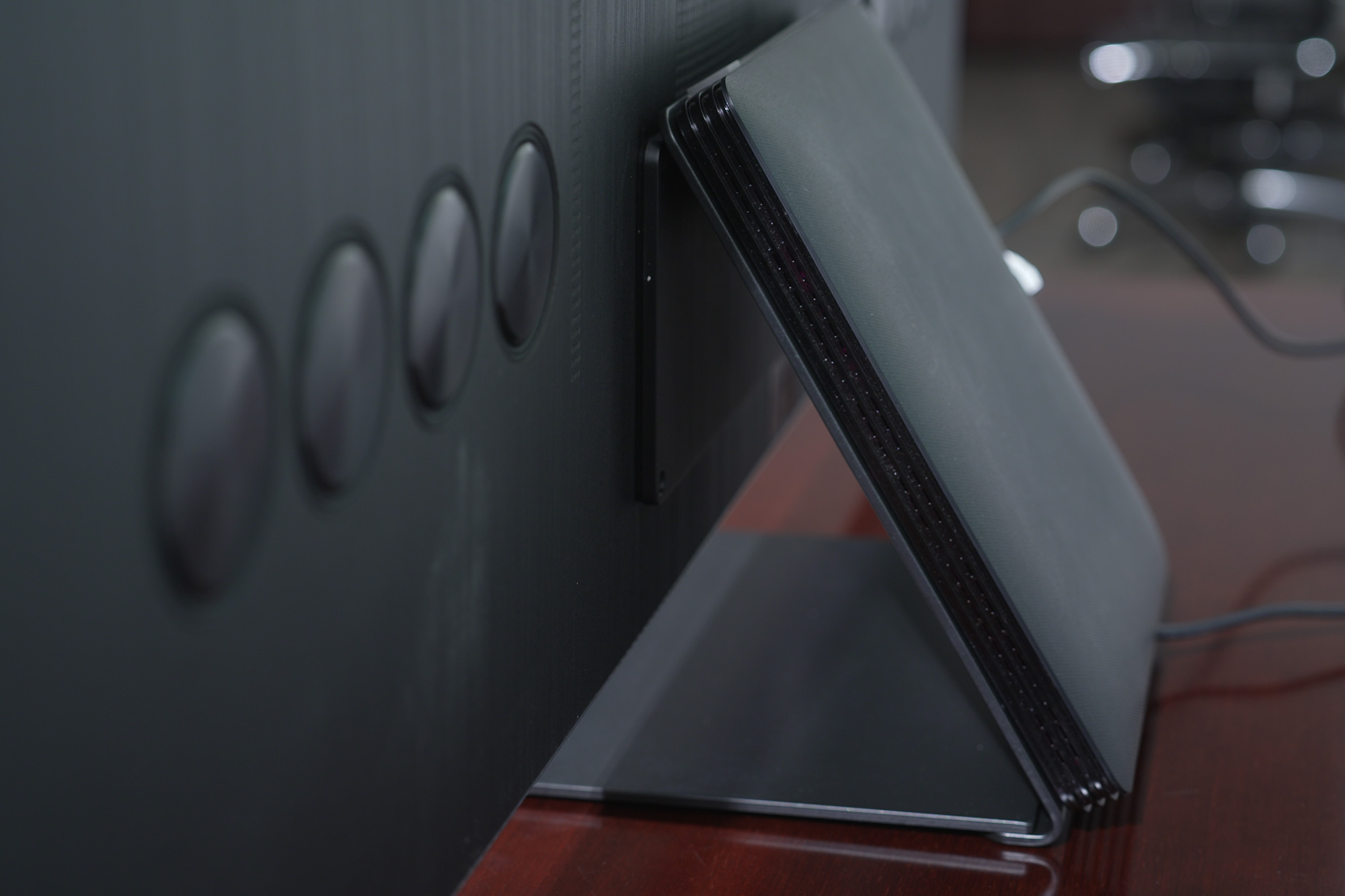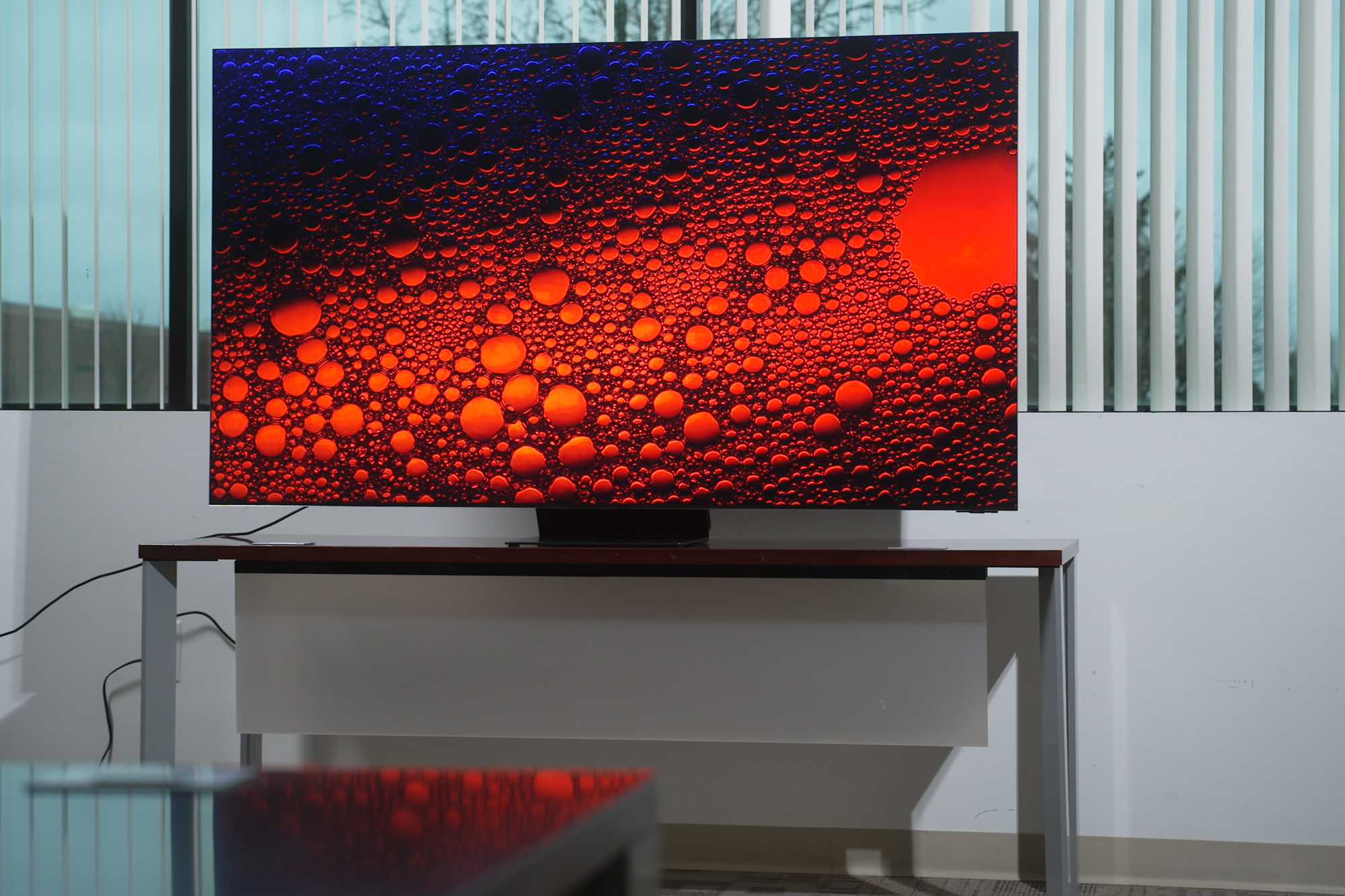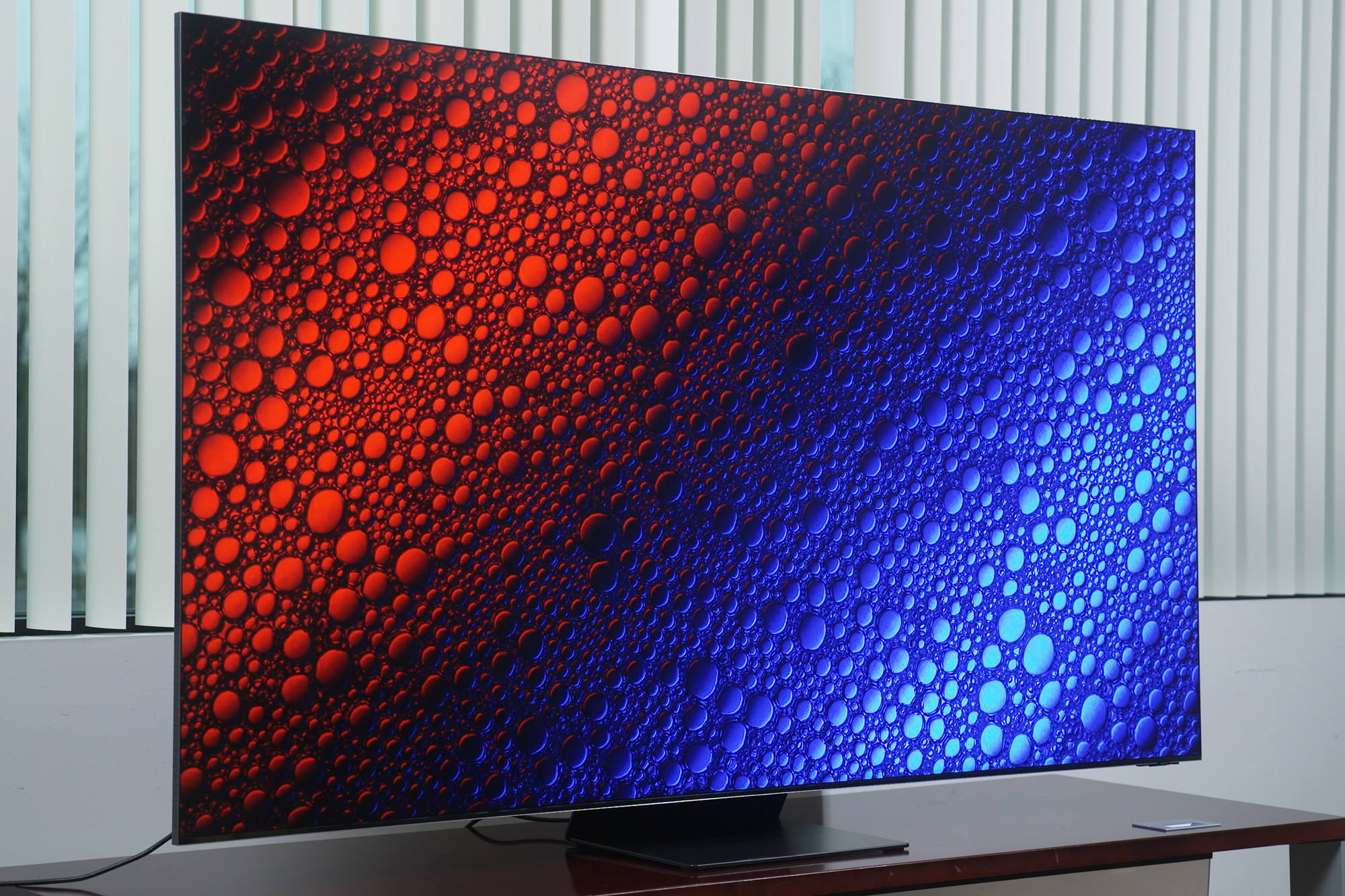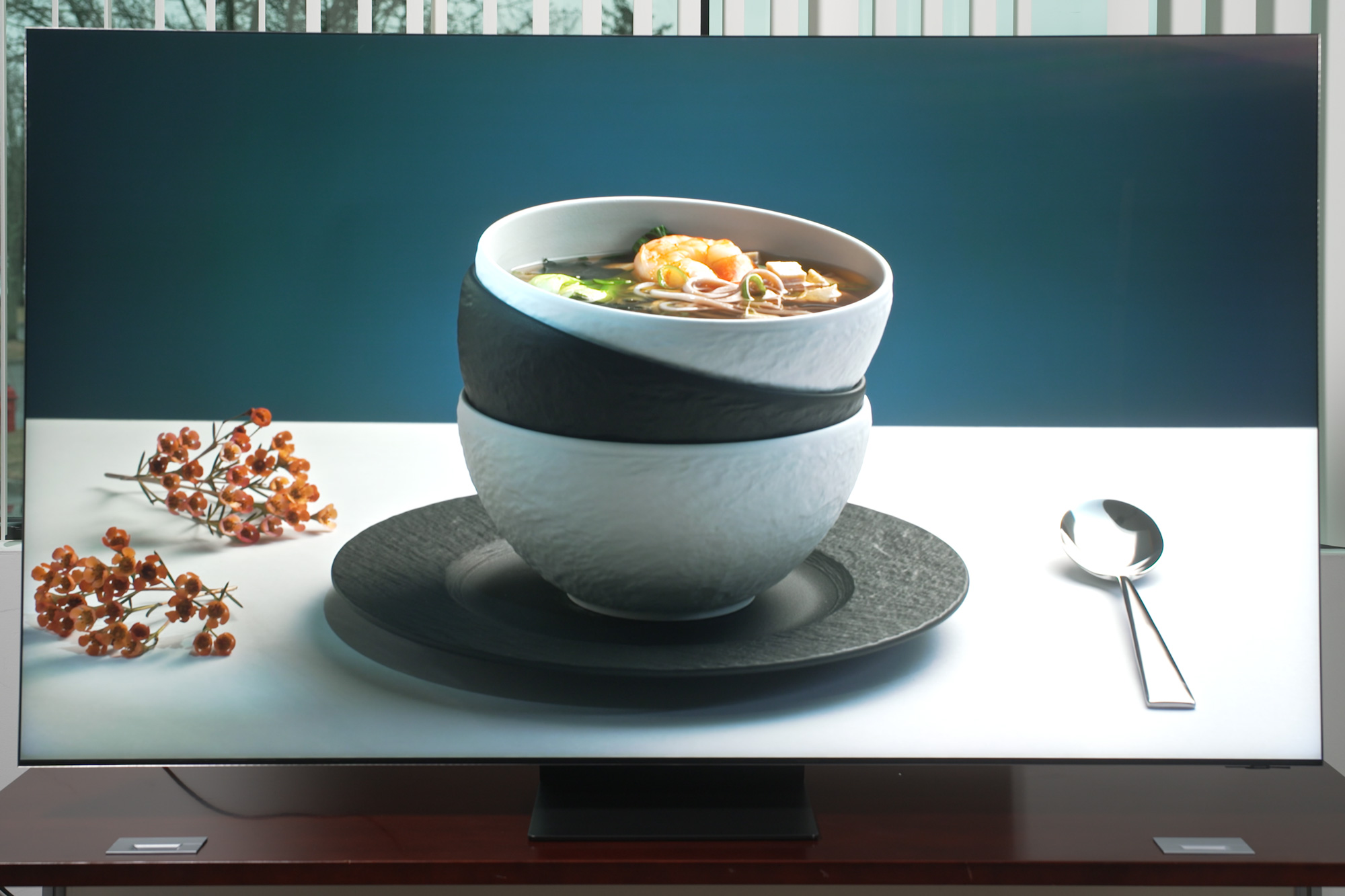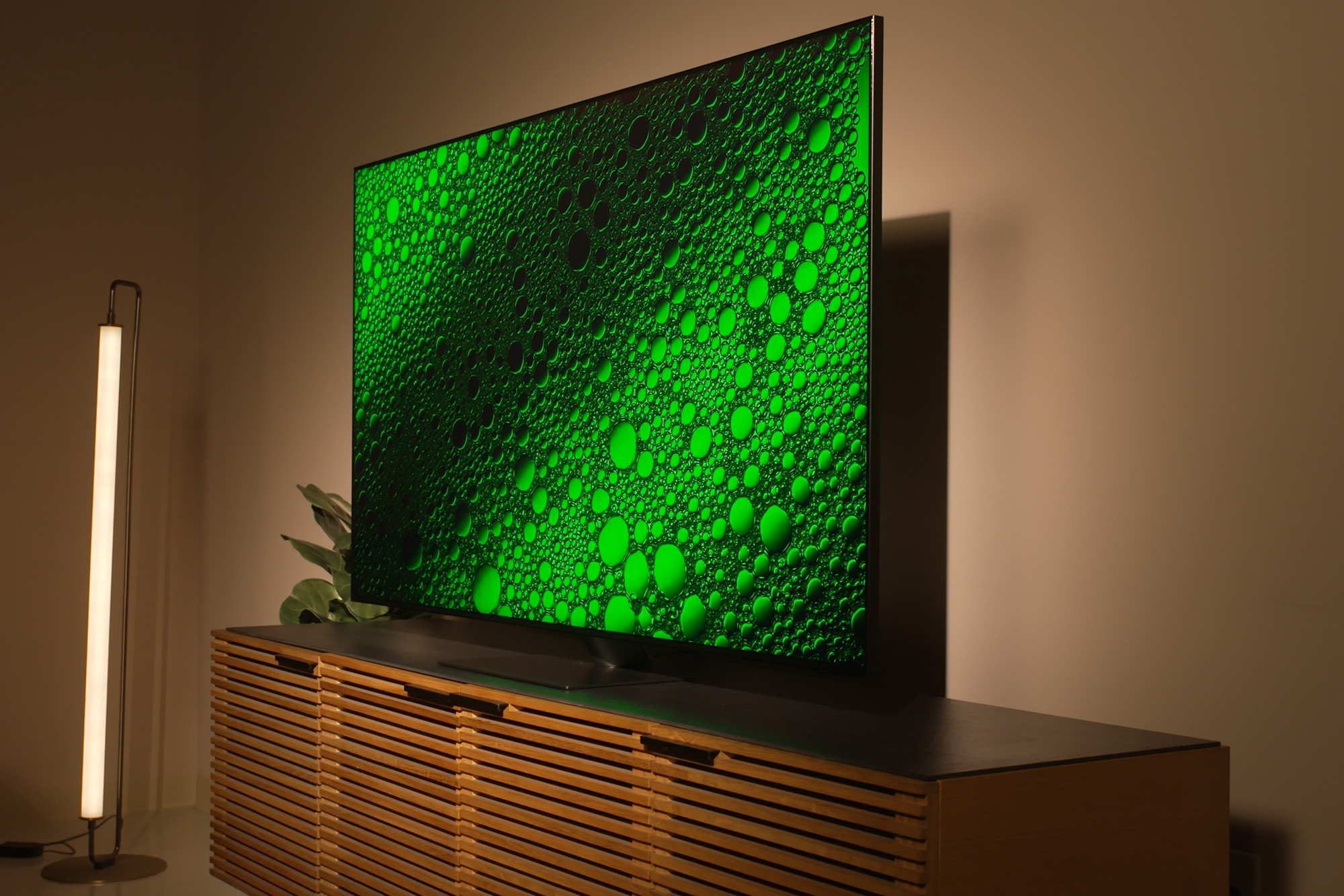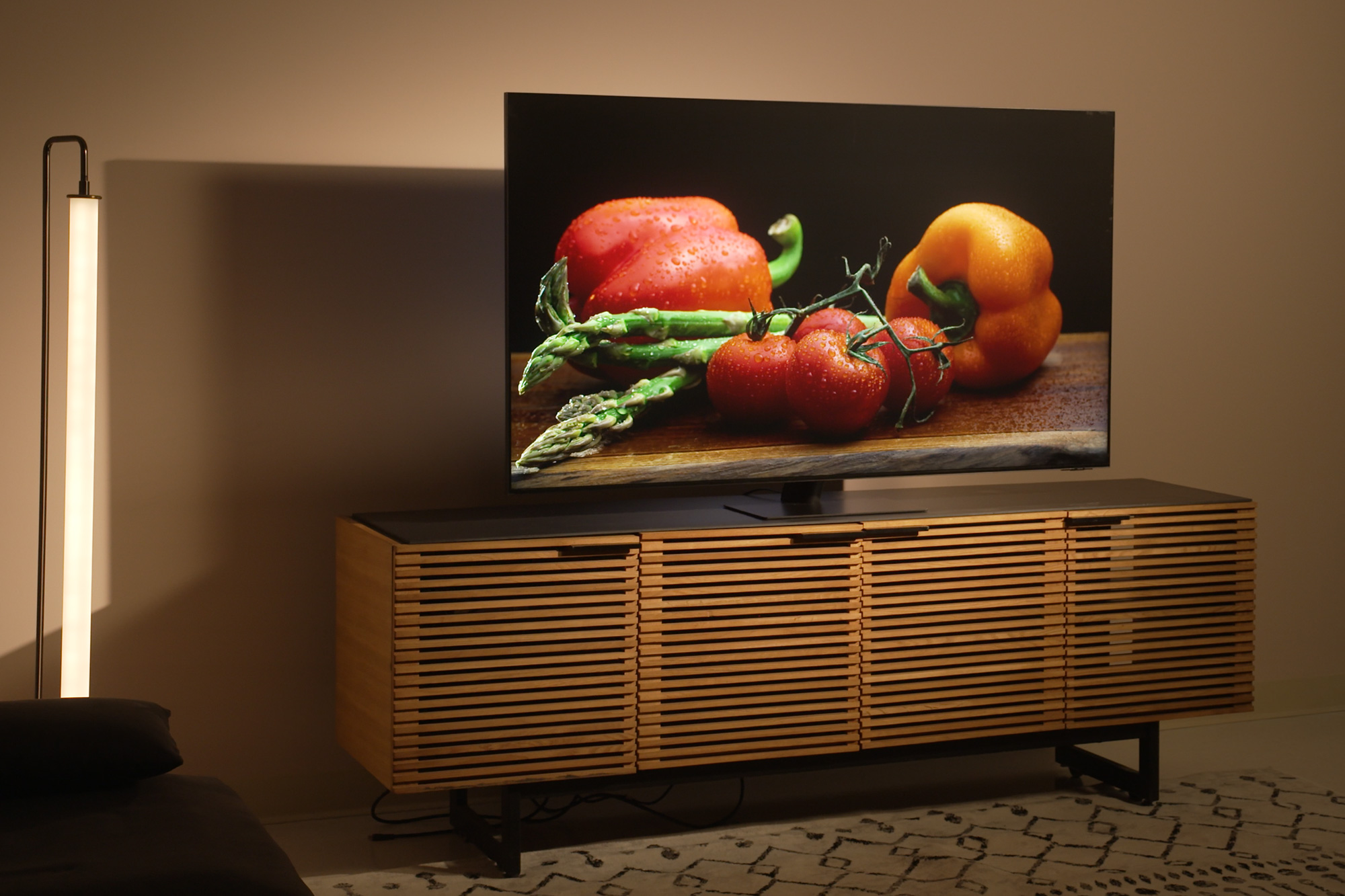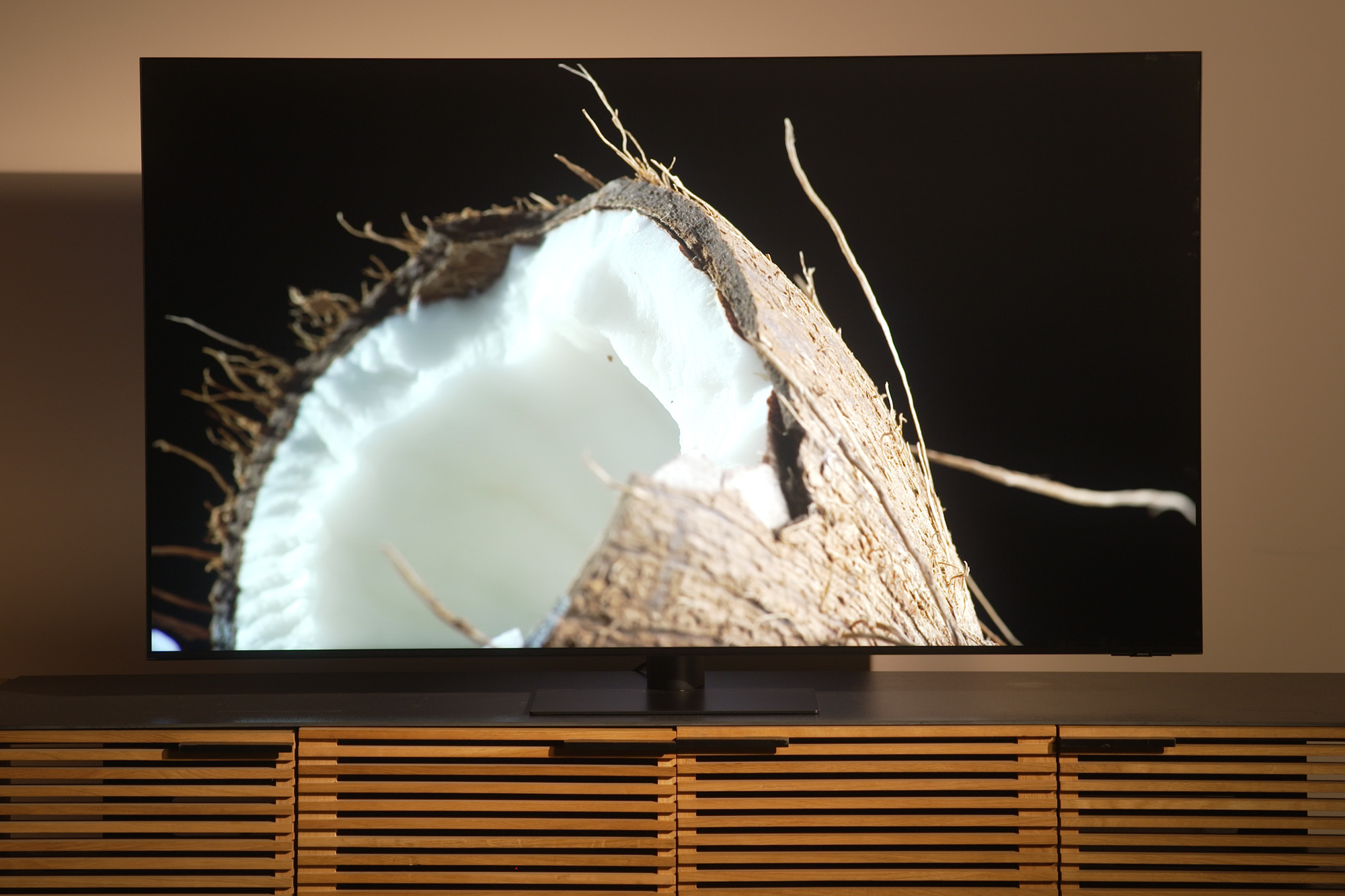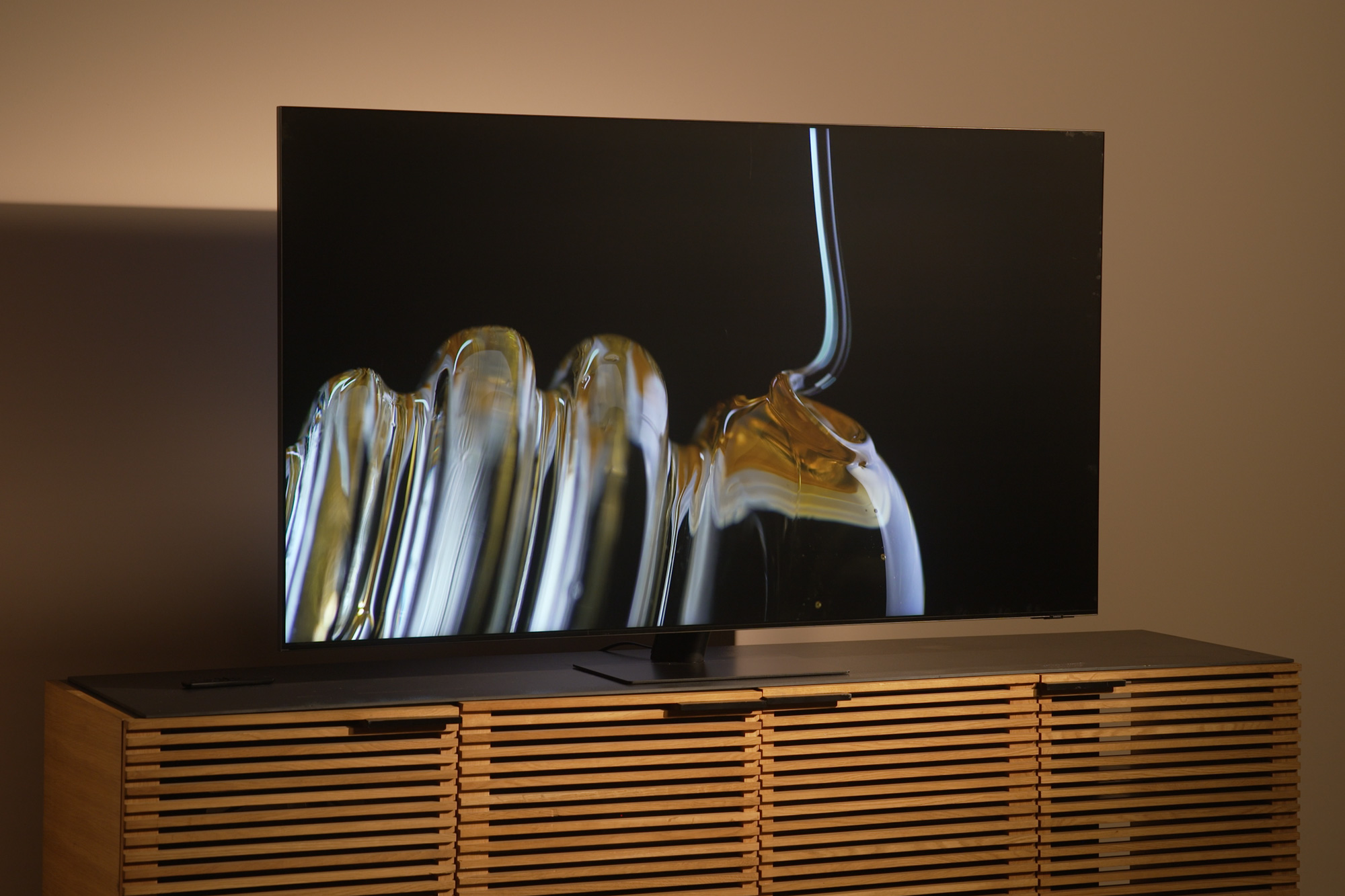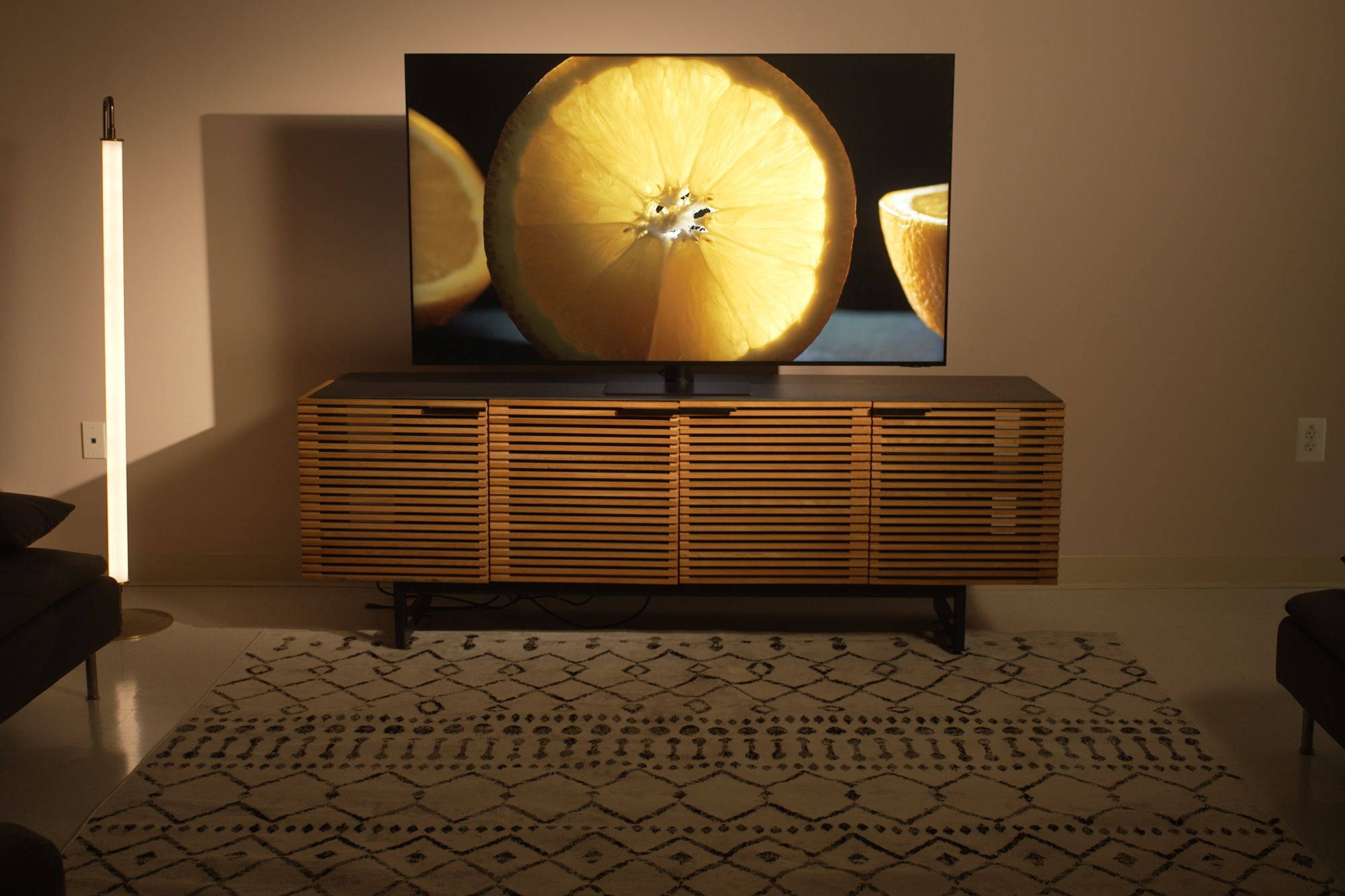I recently flew to New Jersey to go hands-on with Samsung’s top three 2023 TVs. I measured. I viewed. In the end, one of them floored me.
During my one-day visit, I was able to get hands-on with the 65-inch Samsung QN95C Neo QLED, a 75-inch Samsung QN900C 8K Neo QLED, and the much anticipated 77-inch Samsung S95C OLED — aka QD-OLED TV.
It was a lot of fun, if not just a little bit nerve-wracking, so I’m going to tell you what that experience was like, and what I think of these TVs going into the 2023 TV review season.
Worth the trip
There are a few reasons why I fly across the country to check out TVs while some creators and reviewers are buying them and checking them out that way. First, this was a three-for-one visit. I got to see everything in a single day, which allowed me to make some initial comparisons among the TVs. I also had Samsung representatives on hand to answer questions right then and there as they came up, which was hugely helpful. And, finally, I don’t want to actually review these TVs for a few weeks anyway — I’ll get into why this is the case in a bit.
Now you might be wondering: “Well, Caleb, you’re literally in Samsung’s house. How do you know these TVs weren’t specially prepared for you?” To which I would reply: “I’m pretty good at sniffing that sort of thing out.”
Also, this scenario isn’t any different than when a TV gets shipped to me from the brand in question. There always are going to be variances among TVs off the shelf, and what I get is usually going to be the best possible example. Still, there’s zero evidence to support that the TVs I saw have been altered at a root level to be superbly special. That serves nobody, least of all Samsung, if the objective measurements I get are wildly different than what appears on store shelves, expected variances notwithstanding.
Samsung QN900C: upscaling 8K expectations
The QN900C performed exactly as anticipated with one notable exception: Its 8K upscaling was better than I expected. I all but put my nose on this thing looking for upscaling errors, and I was seriously impressed by how clean the upscaled image was. To be clear, I was limited on time. So I watched mostly 4K content upscaled to 8K — not a particularly tough feat to pull off — but I did throw some 1080p content at the TV. And while I have only my memory of previous models for comparison, I still came away impressed.
Compressed streaming content still had the typical banding and blocking I’ve seen in the past, similar to every 8K set I’ve tested. But the resolution of detail and reduction in noise was impressive. Peak brightness, along with black levels and general backlight control, measured at what I expected. In filmmaker mode, I got about 2,600 nits with a 5%, 10%, and 15% window, and about 600 nits full-screen. So, plenty bright, and a bit brighter than I measured last year. That brightness assisted some in color volume, since it hit about 72% of the BT.2020 standard in Filmmaker mode. And obviously, the TV can get significantly brighter in less accurate picture modes — Samsung claims the QN900C can hit up to 4,000 nits.
But again, I expected all that from Samsung’s flagship 8K TV, where Samsung has historically been ahead of the game, essentially forcing folks to opt for 8K to get the very best performance, even if 8K resolution wasn’t going to do anything for them.
Samsung 4K QN95C: OK! I see you, Samsung!
Everything I’ve said about the QN900C really is just a preamble for the 4K QN95C because this is the TV that impressed the living daylights out of me.
Because of how I had to juggle evaluations while recording video, I ended up getting two shots at viewing the QN95C: once by myself for measuring, and then again later when we shot the B-roll for the video you can check out above.
The QN95C is going to be one of the best LED/LCD TVs on the market in 2023.
First off, the measurements were almost too good to be true. They were so good that I asked Samsung representatives point blank if this TV had gotten some extra love before it was sent to them — perhaps the factory engineers knew it was going to be viewed by the press. And they acknowledged that, yes, on occasion they’ll get a sample where Samsung is clearly putting its best foot forward. And I think this was definitely one of those TVs. So, how close the measurements I got will be to those taken off retail samples will no doubt vary. But there are some aspects of the performance that were clearly inherent to the TV, so let me make this clear: The QN95C is going to be one of the best LED/LCD TVs on the market in 2023, and it might just be the best overall when it comes to performance.
The measurement that I got that I just couldn’t believe was around the white balance and color accuracy. The white balance was so spot-on it appeared to have been calibrated — even though I reset it myself. Maybe it’s better than most that roll off the line, but I know from experience that these TVs can be calibrated to that kind of accuracy with no problem.
Backlights and blacks and brightness, oh my
But what really impressed me were the improvements in the backlight control. There are more zones in this TV — I believe Samsung claimed up to double that of the QN95B, but whatever the actual number of zones means a whole lot less to me than how the TV performed. This TV tracked the EOTF (that’s Electro-Optical Transfer Function, the function that converts a digital signal into brightness) extremely well, which may have been a carefully curated factory setting. It mitigated blooming and halo so well that I was blown away. It was that impressive. And then there’s the brightness. Quite frankly, it was astonishing — it came in right around 2,400 nits in Filmmaker mode HDR — and I know it can be higher than that for highlights in content, or even higher in less-accurate picture modes.

So what do that powerful brightness and killer backlight control mean? We’ll have to see how things play out this year, but it is possibly the closest to OLED I’ve seen a 4K LED/LCD TV get. It is definitely close enough to want to dig deeper. I can not wait to get that TV in for a deep-dive review.
On the not-so-positive side of things, I am sad to see Samsung’s One-Connect box go. Last year, that One-Connect box was really the only reason to have gotten the QN95B … but this year is different. The QN95C is its own, super-premium 4K product, even if it doesn’t have the One-Connect box that makes installation so easy for the common consumer. And it stands well ahead of the QN90C as a flagship TV, although that just gets me excited for how good the step-down QN90C might actually be.

Also, I wasn’t all that impressed with the TV’s sound quality, given this is Samsung’s flagship 4K TV, especially with so many bass transducers installed on the back of the set. I was expecting a little more oomph, though I will say that Samsung’s object-tracking sound feature was doing a great job of creating a stereo field. Again, a deeper dive will reveal more. Stay tuned.
The takeaway
Samsung’s two flagship 2023 Neo QLED TVs, the QN900C 8K and QN95C 4K, are both stellar sets. But this year proves that you don’t have to spend 8K TV money to get the best performance. If anything, Samsung’s flagship 8K QLED TV will be a harder sell because its flagship
